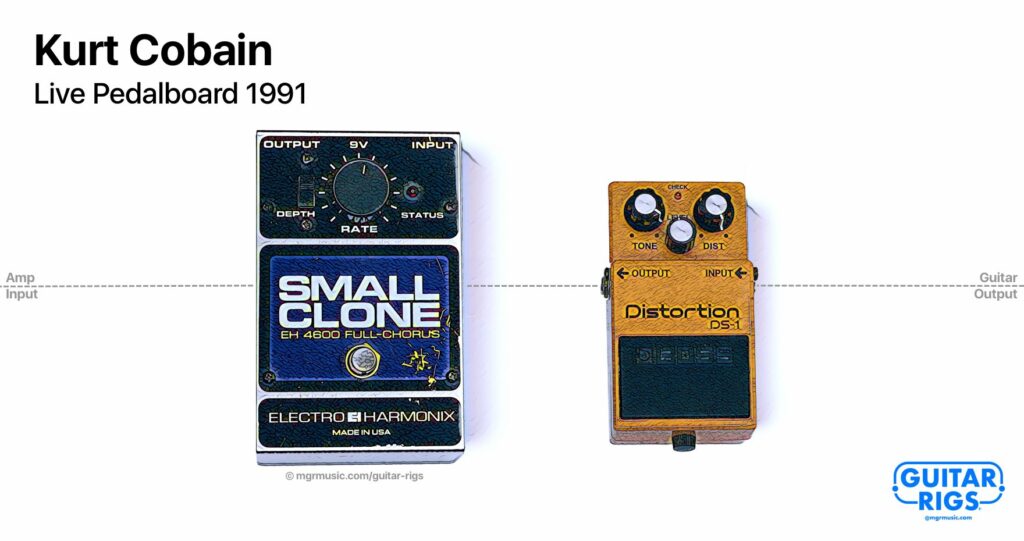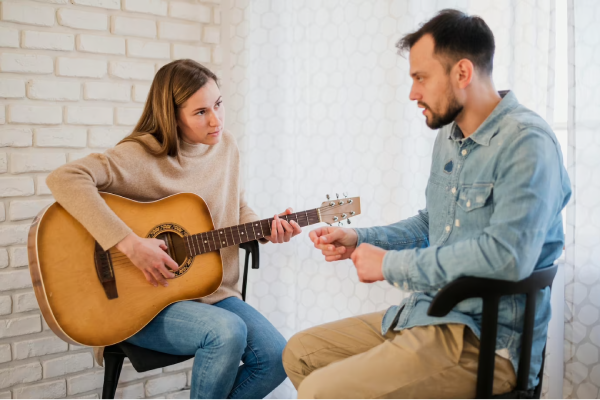10 Simple Things You Can Do as a Beginner to Improve Guitar Playing
Practice regularly: Consistency is key. Set aside dedicated practice time each day to develop muscle memory and improve your skills. Learn proper technique: Focus on correct hand positioning, finger placement, and posture. Building a solid foundation of technique will enhance your playing in the long run. Start with basic chords: Begin by learning a few essential chords, such as C, G, D, and E minor. Practice transitioning between these chords smoothly.
Practice scales: Scales are fundamental to understanding melody and developing dexterity. Start with the major and minor pentatonic scales and gradually explore more scales as you progress. Use a metronome: Develop your sense of timing and rhythm by practicing with a metronome. Start slow and gradually increase the tempo as you become more comfortable. Learn songs you love: Choose songs that inspire you and gradually learn to play them. Break them down into smaller sections and practice each part before putting them together. Listen actively: Pay attention to different guitar sounds, styles, and techniques by listening to various genres of music. This will broaden your musical understanding and inspire creativity.
Experiment with different strumming patterns: Practice different strumming patterns to add variety and rhythm to your playing. Start with simple patterns and gradually incorporate more complex ones. Seek guidance: Consider taking lessons from a qualified guitar instructor who can provide personalized guidance and help you progress more efficiently. Enjoy the process: Remember to have fun and enjoy playing the guitar. Embrace the challenges and celebrate your progress along the way.

Pedals
- Boss DS-1 Distortion
- Electro-Harmonix Small Clone
- Electro-Harmonix Big Muff Fuzz (used for a “dark, thumpier sound” on Lithium)
Boss DS-1
The DS-1 was considered the main factor in Kurt’s tone in this era. It was his main distortion tone. The DS-1 is a harsher style clipping than a standard amp overdrive or other overdrive style pedal. This cutting tone became a signature part of Cobain’s wall of sound.
The modern DS-1 pedals are not identical to those that Kurt used. He used a Japanese model from the 1980s. At some point in the manufacturing, the internal chip was changed which resulted in the pedals having a different sound. Many mods exist to bring modern DS-1 pedals back to the old spec.
Electro Harmonix Small Clone
The EHX Small Clone is a chorus pedal that Kurt used on the famous, watery intro to Come As You Are. The swirling modulation of the Small Clone gives the intro guitar to this track a very distinct and moody sound. This was also used on the pre-chorus of Smells Like Teen Spirit.
Electro Harmonix Big Muff Fuzz
The Big Muff was used on the Nevermind album with the Fender Bassman for the heavy parts in the song Lithium, however it was not a core part of Kurt’s tone in this era. It became a much bigger part of the rig on the In Utero tour. For the Nevermind era it’s use was minimal.
Guitars
- 1990 Fender Stratocasters (Japanese Models – usually smashed by Cobain at the end of a concert)
- 1965 Fender Jaguar
- 1969 Fender Mustang
- 12-string Harmony Stella (purchased by Cobain from a pawn shop for $31.21 in 1990 and strung with 5 nylon guitar strings, barely staying in tune – used for Polly and Something In The Way)
Fender Stratocaster
In the run-up to Nevermind, Geffen Records gave Nirvana an advance of $287,000. This was to fund the recording process but also to allow the band to purchase some new equipment to use in the studio.
Kurt bought some Japanese made Stratocasters as they were the most readily available left-handed models. They also came stock with humbuckers in the bridge position which meant that Kurt did not have to modify the guitars in anyway to get his desired tone. Sources close to the band indicated that Kurt was never a fan of spending a lot of money on guitars, especially as most of them got smashed.
Kurt said in a 1991 interview that he developed a taste for Fender style guitars in the run up to Nevermind’s recording due to their skinny necks.
Fender Jaguar
Over the Nevermind recording sessions, Kurt came into possession of a 1965 Fender Jaguar which was loaded with a DiMarzio Super Distortion humbucker in the bridge and a DiMarzio PAF in the neck position. This was unusual for a Jaguar as they came stock with single coil pickups. These modifications took place prior to Cobain owning the guitar.
Fender Mustang
One guitar Kurt loved was his 1969 Fender Mustang in Lake Placid Blue. This was his favourite guitar and one he would never smash. Cobain was quoted by Guitar World magazine saying
“Out of all the guitars in the whole world, the Fender Mustang is my favourite. They’re cheap and totally inefficient, and they sound like crap and are very small. They also don’t stay in tune, and when you want to raise the string action on the fretboard, you have to loosen all the strings and completely remove the bridge. You have to turn these little screws with your fingers and hope that you’ve estimated it right. If you screw up, you have to repeat the process over and over until you get it right. Whoever invented that guitar was a dork. I guess I’m calling Leo Fender, the dead guy, a dork.”(GuitarWorld.com – Source #1)
At some point around this time, Kurt has his Mustang modified to have a Gotoh Tune-o-Matic bridge and subsequently this was done to further Mustang models he acquired.
Amplifiers and Cabinets
- Mesa/Boogie Studio .22 Preamp
- Marshall 1960’s (A and B) Cabs (The cabinets were loaded with either Celestion 12″ G12M Greenback Speakers or Celestion 12″ Vintage 30 Speakers)
- Fender Bassman and Vox AC30
Mesa Boogie Studio .22 Preamp / Crest 4801 Power Amp
Kurt’s amplifier of choice for live performance was a combination of the Mesa Boogie Studio .22 acting as a preamp and a Crest 4801 as his power amp. The first iteration of this setup was the Mesa Boogie paired with Crown Power Base 2 800w Power Amp, but Kurt felt the Crest worked better with the Mesa preamp.
On stage, Kurt ran a variety of Marshall cabinets and he wanted one amp that could run them all at once so that he didn’t have to transport multiple heads on a tour.
Marshall 4×12 Cabinets
On stage and in the studio, Kurt favoured Marshall 4×12 cabinets as his speaker cabinet of choice. He was known to use as many as eight cabinets at once. It’s unsure if they were all plugged in and active or just props for knocking over and smashing up at the end of a show.
He favoured the standard 1960A angled cab and 1960B straight cab which would have been loaded with Celestion G12M Greenback speakers of Celestion Vintage 30 speakers
Cobain had somewhat of a disdain for Marshall as a brand, although he chose to use their cabinets on stage, he always covered the logos with black tape.
Fender Bassman and Vox AC30
It has been noted in various interviews with producer Butch Vig that Cobain also used a Fender Bassman and a Vox AC30 in the studio for the recording of Nevermind. It is not noted what these amps were used for but they most likely would have been used to record the clean guitar parts on the album, or for the purpose of layering guitar parts, except for Butch’s admission that the Bassmam was used with a fuzz on the track Lithium for it’s thumpy, dark tone.
In the early days of Nirvana, the Bassman was Kurt’s amp of choice. It is not known if the model used on Nevermind was his personal one or if it belonged to the studio.
Cobain’s guitars were mostly Fender having apparently developed a taste for the make prior to entering the studio – on the album Cobain mostly used 1965 Fender Jaguar or a 1969 Fender Mustang.
Sources:
(1) guitarworld.com/artists/kurt-cobain-talks-gear-and-more-his-final-guitar-world-interview-1992
Also Referenced:
Ground Guitar, Kurt’s Equipment, UberProAudio
The post Kurt Cobain Guitar Rig 1991 appeared first on MusicTeacher.com.

